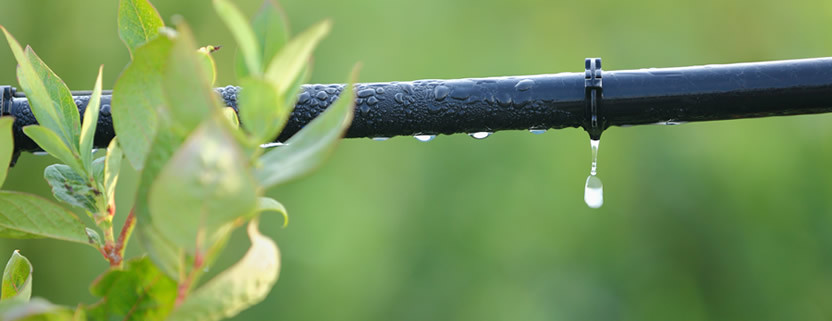Benefits of Installing a Drip Irrigation System
Standard sprinkler systems have one major flaw: massive water wastage due to evaporation. A drip irrigation system uses a hose with tiny holes to deliver small amounts of water directly where it’s needed as a slow trickle over time. A drip irrigation system is easy to set up to reduce water waste and give your plants water where they need it the most. A drip irrigation system can be used for your lawn, landscaping, or vegetable garden. Here are some of the most important benefits of installing an irrigation system on your property.
Save Water
The Environmental Protection Agency (EPA) recommends the use of drip or micro-irrigation systems over conventional sprinkler systems because they deliver a low volume of water to the roots of plants to reduce water loss due to evaporation, runoff, overspray, and wind. According to the EPA, a drip irrigation system will use anywhere from 20% to 50% less water than a pop-up sprinkler system, saving up to 300,000 gallons of water every year.
Improve Plant Growth
Delivering smaller amounts of water over a longer period of time improves growing conditions for most plants and trees. As the water flow is continuous, the water will penetrate deeply into the soil to get into the root zone and encourage plants to develop deep roots. The amount and schedule of water delivery can also be varied to meet the specific needs of plants in your landscaping. Longer watering times also reduces nutrient runoff and soil erosion.
Discourage Weeds
A micro-irrigation system can be an effective way to discourage weeds in your garden. By only applying water to desirable plants and roots, soil between plants is not supplied with water to reduce weed growth. Drip irrigation can also be combined with plastic mulch and other weed control methods to keep your landscaping weed-free and beautiful.
Control Fungal Diseases
Many fungal diseases thrive on wet plant leaves. Because fungal diseases can grow rapidly under moist conditions, the key to preventing fungus is avoiding wet foliage. Unlike a sprinkler system, a drip irrigation system will deliver water directly to the roots of the plant without soaking the foliage.
Easy Installation
Drip irrigation systems are very easy to install without advanced landscaping knowledge or excavation of your lawn, unlike a pop-up sprinkler system. Tubing is attached to a pressure regulator, backflow preventer, and timer at the faucet and is then weaved through the area that requires water. Water is then delivered to each plant or area with micro-tubing, emitters, and/or sprayers. Micro-tubing and attachments can be installed on the main tubing with a basic hole punch device. If you decide to move the location of emitters or sprayers, a tiny plug can be used to fill the hole in the tubing.
Adaptability
A drip irrigation system is not complicated to set up, and it can be easily customized and reconfigured to fit the changing needs of your garden. Once the system is set up, it can be adapted to the number of plants, each plant’s water needs, zone water needs, and more by adding a timer and using a range of sprayers and emitters. Emitters connect to tubing to deliver a slow, consistent rate of water that may be 0.5, 1, 2, or 4 gallons per hour. Sprayers can be used strategically to water groupings or rows of plants.
Almost any part of your landscaping can be watered with a drip irrigation system, from trees and scrubs to potted plants, hanging plants, vegetables, and flowers. A drip irrigation system is easier to install than you may think. Many homeowners begin with starter kits that include basic components like piping, micro-tubing, filters, a backflow generator, a pressure regulator, and a range of emitters. You can design your own drip irrigation system or work with a professional landscaper to create an efficient system that delivers water exactly where it’s needed on your property without waste.


Leave a Reply
Want to join the discussion?Feel free to contribute!